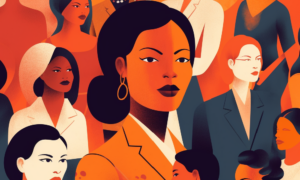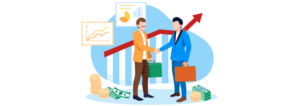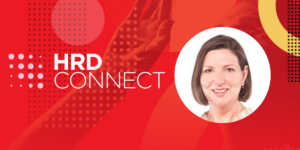COVID-19: how HR can consider wellbeing in planning the return to work
- 5 Min Read
A return to the workplace is now on the horizon for many organisations. However, this could be problematic in many ways. Becky Thoseby, Head of Workplace Wellbeing, Ministry of Justice UK, explores this issue further, outlining how HR leaders can conduct an efficient and fair return to office life.
- Author: Becky Thoseby
- Date published: Jun 9, 2020
- Categories

When I joined the Ministry of Justice (MoJ) in January of this year, I was both impressed and heartened by how the organisation had embraced flexible working. Little did I know that just three months later, I would be working full-time from home. Now, the UK Government has started to encourage people who cannot work at home to return to their workplace where possible. So, the question is, what will this transition look like?
Firstly, we need to remember that many organisations, MoJ included, have staff who will have been in the workplace throughout the pandemic. Talking about a universal “return to the workplace” without recognising this fact could exacerbate perceptions of the risk gap between these workers and those who have been able to work from home.
Secondly, the ability to work safely in the office is only part of the equation. Employees also need to be able to get to their place of work safely, and this is particularly challenging in a major city such as London where public transport is used by the vast majority of workers. What’s more, those who are vulnerable will not be able to return at this time. Employers need to look carefully at the inclusion aspect of this.
Finally, there will be many people who actively want to return, mainly because of challenging home circumstances. Sadly, lockdown has taught many people that their home is not the safe haven it should be. For this group, the risk of both options needs to be balanced.
So how can employers manage returnees?
At MoJ, we take a person-centred approach to wellbeing, with the line manager at its heart. So, alongside the guidance being issued around how to work safely, we are focusing on supporting line managers to have wellbeing-based conversations about the return to the workplace, starting with three key questions:
- How is the employee feeling about returning to the workplace?
- Do they understand what the safe working guidance means in terms of how they fulfill their role?
- What are their primary anxieties about returning to the workplace?
Subsequently, the conversation then explores how the employee could reduce these anxieties of their own accord and what the line manager could do to assist in this.
This helps to air out any relevant concerns without the burden falling solely on the line manager – the employee has to share ownership of the solution.
Following this, the manager needs to check whether any workplace adjustments are needed. These might have been in place prior to the COVID–19 restrictions or might have changed, temporarily or permanently. For some team members, adjustments may have been introduced for the first time during the restrictions. Hence, managers need to make sure that their needs are still being met when they return to the workplace.
After addressing the employee’s immediate anxieties, the manager should then explore how they want to work going forward. People will have reacted differently to lockdown and will therefore be wanting a different experience of being in the workplace when they return. At MoJ, we are using the Royal Society of Arts’ Bridges to the Future framework for these conversations.
As such, managers will be asking four key questions to help the employee thrive when they return:
End: What working practices did the employee start during lockdown that they now want to stop?
Amplify: What working practices did the employee start during lockdown that they liked and wish to continue?
Let go: What working practices did the employee stop during lockdown that they do not wish to pick up again?
Restart: What working practices did the employee stop during lockdown that they miss and want to pick up again?
The conversation should close with an agreement as to when the employee’s wellbeing will next be discussed. Initially this may need to be done more frequently as they adjust to being back in the workplace. Managers and workers may also need to try different things before finding the way of working that enables them to thrive and perform at their best, and revisiting the conversation will assist them in doing that. At MoJ, we have standard wellbeing conversation guidance to help managers with this.
Although the impact of COVID has been devastating in many ways, it also presents an exciting opportunity for society and organisations to ‘build back better’.
What to consider moving forward
Leaders who want to do this must consider the return to the workplace through a lens of inclusion, ensuring that no one is disadvantaged because they cannot return, wish to return later or are considered low priority for return. Considerations might include:
- How are decisions made? Is it through chance conversations at the desk after hours or in a forum where all voices can be heard?
- How can meetings be handled so that everyone has an equal chance of participation when not all colleagues are physically present?
- How does the organisation view commitment and high performance? Is it through a lens of being always available and having the luxury of being able to put work first?
- How can colleagues who do not work in the same location as the senior team get the same visibility as those who do?
- What assumptions are we holding about job design and the way work is organised, and how can we make flexibility the default?
- Do we have a culture of regular meetings and how does this impact different groups?
I have real concerns about how COVID will impact inclusion in the workplace, particularly for women, carers and those with wellbeing challenges. However, I am also hopeful. If there was ever an opportunity to change the experience of work for the better, surely this is it?







